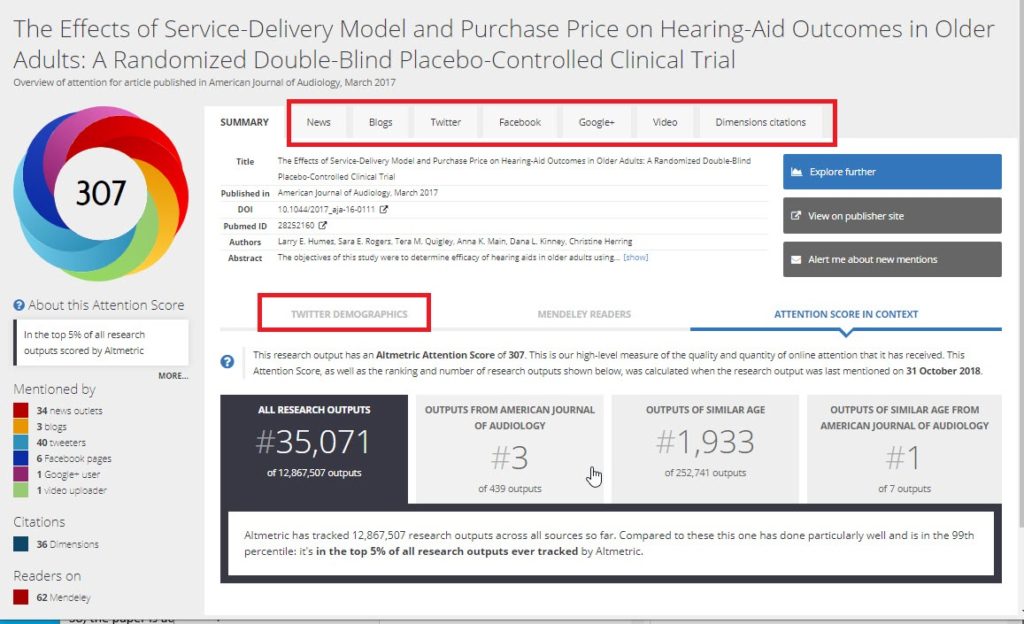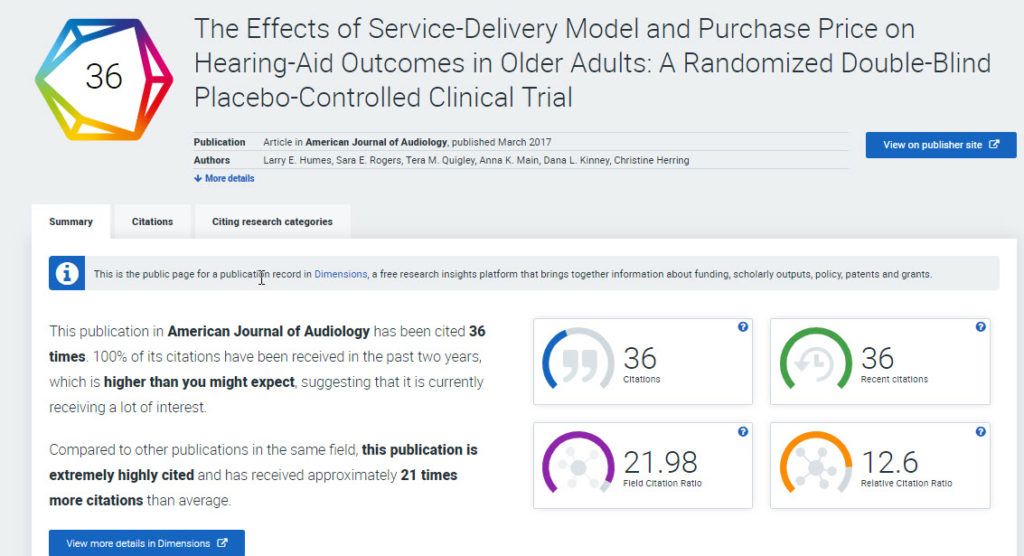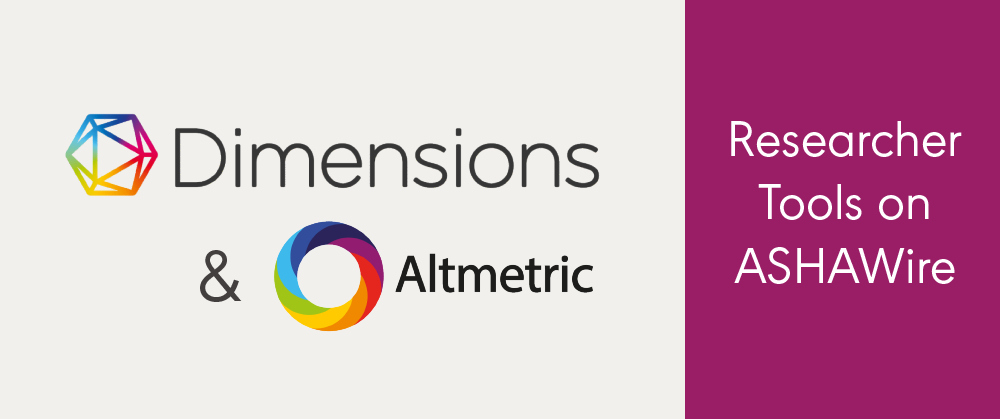With so much information available, it’s tempting for authors to track the impact that their articles are having. However, this process can be both time-consuming and confusing. Searching for references to your paper online, tracking social media mentions, or even contacting your publisher for additional information can be tedious tasks—and can result in data that may mean little without being placed in the proper context. Now, authors publishing with the ASHA Journals can immediately check the impact of their work on the same page as the article itself—with two helpful tools known as Altmetric and Dimensions!
The first image you’ll see on articles published by the ASHA Journals is the Altmetric badge.

Altmetric is a tool that tracks more than 15 different sources—including conversations happening on social media; patents, public policy, and syllabi; and even traditional media such as the news—and assigns an article an “Attention Score.” The badge is made up of one or, more typically, a combination of 17 colors to represent article mentions from various sources. Clicking on the score brings the viewer to a profile showing exactly what sources the article mentions are coming from.
Here, you can see the countries where the article’s attention is coming from as well as the demographic information (e.g., scientist, practitioner, member of the public) of the person discussing the article. Authors can even preview the social media conversations surrounding their articles through tabs on the Altmetric profile page. This profile includes useful information comparing the Altmetric score to other articles from the same journal and of the same age, making Altmetric more than just a number. Authors can also sign up for updates via email, informing them of when an article is mentioned online.

Whereas Altmetric captures a large swath of data, Dimensions focuses on an article’s citations in other journals—a time-honored method of tracking the impact of research. Like Altmetric, each article’s visually dynamic Dimensions badge leads to a page placing that information into context. The “Summary” tab shows the overall citations as well as the recent citations; the “Citations” tab shows the number of citations the article received by year; and the “Citing Research Categories” tab shows what fields publishers are citing articles from most frequently. Dimensions also uses two advanced metrics to provide even more citation information. The Field Citation Ratio (FCR) shows the citations of an article compared to similarly aged articles in that subject area. An average article has an FCR of 1, with scores higher than 1 indicating that an article has a higher-than-average citation frequency. The Relative Citation Ratio (RCR) similarly compares an article to others of the same age in the field that were funded by the National Institutes of Health (NIH).[1] Finally, each article’s “Dimensions Details” page collects the abstract, funding information, supplemental materials from Figshare, and Dimensions and Altmetric badges all in one place.

Readers can also find this attention and citation information useful when they’re looking to read some of the most relevant articles from the ASHA Journals. The ASHAWire home page includes a “Trending Research” category exploring some of the articles that are top performers on Altmetric.
These useful tools are free and already reside on any
article page on ASHAWire.[2]
For more information on how use Altmetric to track engagement with your work and
use it to build your reputation, both on and offline, see the Altmetric and Dimensions websites: Both
offer additional tools and information for researchers.
[1] Eligible articles that were not funded by the NIH will still receive an RCR. You can learn more about how the RCR is calculated from the NIH Open Mike Blog
[2] If an article has yet to be cited or mentioned online, no badges will appear for that article.









